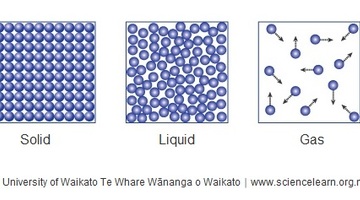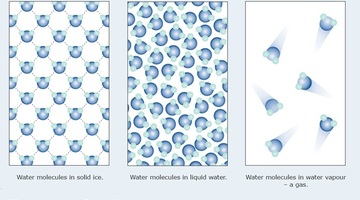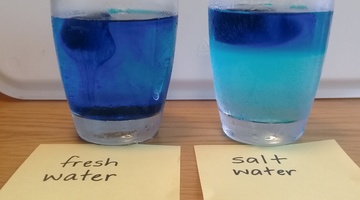This is a great explanatory article about our atmosphere and the way we can describe it. Younger students (year 5- 8) could engage with this by considering the infographic. Use of questions such as:
At what height above the earth is the temperature warmer than at the top of Mt Everest?
This activity offers weblinks that will enable students to collect and monitor data to get some sense of the scale of emissions. This is important to become informed about actions to address climate change, but also scale is an important big idea in science.
Fire is always exciting, but this activity supports student understanding of fire, the fire triangle and ways of increasing fire safety. It also introduces students to the idea that a gas can be poured like a liquid.
Click to add note
This video is one tool that can be used to help students see a vacuum in action. In withdrawing the air from the cheese, students can see the plastic adhering closely to the cheese whilst also removing the cheese from the drying effects of air.
This activity helps students to get a physical framework to think about molecules. The use of drama engages students and explicit teacher talk can highlight nature of science learning in terms of the use of models in science to illustrate conceptions.
Climate change is caused through changes to our atmosphere. This article is an introduction to the types of changes we experience as the composition of our atmosphere changes. This is the blanket that protects the world from much of the ultraviolet radiation being emanated from the sun.
The infographic on this page outlines the impact of climate change on Māori identity and mana. This infographic could be a wero to students.
This article is accessible to students from around year 5 upwards and with some front loading of vocabulary will be a useful provocation to a debate on how to balance personal vs community needs.
Click to add note
This article is just asking for students to do some research to locate some images to illustrate the points in time. Positioning this around the classroom with matching text will highlight increasing and changing energy sources over time.
Click to add note
This activity is focused on the bubble mixture but of course the other critical part of a bubble is the air inside it. How does the temperature of air inside or outside affect the bubble and what about air pressure and humidity. Great opportunity for repeated bubble activities and teacher talk to highlight noticing differences in bubbles and what the weather is doing.
Air pressure plays an important role in helping birds to fly. The shape of the wing alters the movement of air creating areas of low pressure that creates lift.
One of the interesting aspects in this video (check the transcript perhaps) is that it highlights how air behaves like a liquid and will flow down hill when it is denser than the air around it. This is usually caused by increased density in this case caused by lower temperatures.
This activity supports students to make the direct link between the "push" of air and the change in air pressure. A further extension could be for students to record and date the changes in air pressure over a week and then compare that to the data from meteorological sites.
Click to add note
This image is a great way to highlight how a diagram highlights a particular point and how the information conveyed is different to a photograph for instance. This links directly to the capability Interpret representations. And of course it shares information as to what is going on when a warm layer of air sits on top of that cooler layer.
It is interesting for students to consider how air pollution levels are strongly influenced by air pressure. The presence of inversion layers caused by differing air pressures traps air pollution underneath.
An imaginative response to this challenge could be to get students to consider all of the possible ways of 'solving' the problem of air pollution
Click to add note
Although this activity is about floating eggs in water, the principle is the same. Objects that are less dense than the medium they are in will float. That floating can be in liquid or air. Increasing the density of the medium means that there are more molecules packed closer together. In air this can be due to cooler temperatures.
Strong links to Maths in this activity where students explore the relationship between size and mass to get an idea of density. Good for measurement as well as number.
Click to add note
Click to add note
Although this ice is floating on water, it is because the ice is less dense than the water on which it floats. Water is unusual in this phenomenon. A solid is usually more dense than its liquid form. When water forms ice, the way that the molecules pack together results in the reduced density of the solid form of water.
Click to add note
An old favourite that is well worth doing to unpick some common misconceptions- teachers- be sure to read right through to the end. You may be surprised.
Click to add note





















